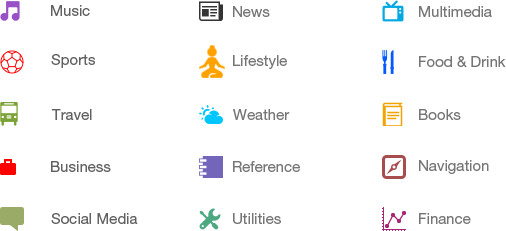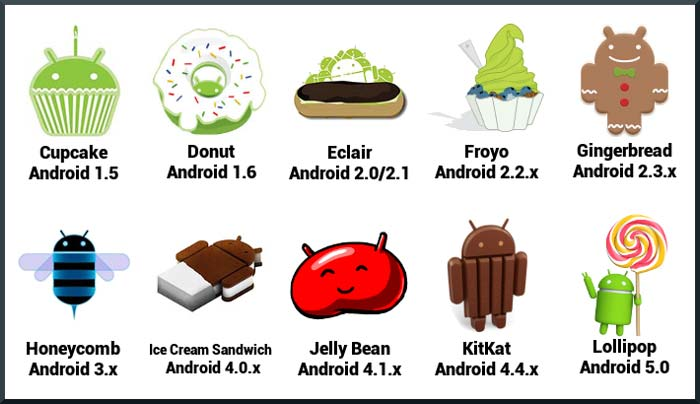Android overview
May 21, 2021 Android
Table of contents
Android overview
What is Android?

Android is an open source, Linux-based mobile device operating system, such as smartphones and tablets. Android was developed by the Open Phone Alliance, led by Google and other companies.
Android provides a unified approach to application development, which means that developers only need to develop for Android so that their applications can run on different Android-powered mobile devices.
Google released its first beta version of the Android Software Development Kit (SDK) in 2007 and its first commercial version, Android 1.0, in September 2008.
On June 27, 2012, at Google I/O, Google announced the release of Android version 4.1 Jelly Bean. Jelly Bean is a progressive update in terms of functionality and performance, with the primary goal of improving the user interface.
Android source code is based on free and open source software licenses. Most of the code released by Google follows Apache License 2.0, and changes to the Linux kernel follow GNU General Public License Version 2.
Android development benefits
- Open source
- Numerous developers and powerful communities
- Growing market
- International app integration
- Low development costs
- A higher chance of success
- A rich development environment

Android features
Android is a powerful operating system that competes with Apple 4GS and supports some great features. Some of the features are listed below:
| Characteristics | Describe |
|---|---|
| Nice UI | The basic screen of the Android operating system provides a beautiful and intuitive user interface. |
| Connectivity | GSM/EDGE, IDEN, CDMA, EV-DO, UMTS, Bluetooth, Wi-Fi, LTE, NFC and WiMAX. |
| Store | Lightweight related database SQLite for data storage |
| Media support | H.263, H.264, MPEG-4 SP, AMR, AMR-WB, AAC, HE-AAC, AAC 5.1, MP3, MIDI, Ogg Vorbis, WAV, JPEG, PNG, GIF, and BMP |
| News | SMS and MMS |
| Web browser | Open source-based WebKit layout engine, plus V8 JavaScript engine with HTML5 and CSS3 Chrome support. |
| Multi-touch | Android natively supports multi-touch, starting with handheld devices such as HTC Hero. |
| Multitasth mission | Users can jump from one task to another, and can run a variety of apps at the same time. |
| Adjustable widgets | Widgets are resizeable so that users can expand more content or zoom out to save space. |
| Multilingual | One-way and multi-way text are supported. |
| Gcm | Google Cloud Messaging (GCM) is a service that lets developers send text message data to users of Android devices without the need for a proprietary synchronization solution. |
| Wi-Fi Direct | A technique for directly discovering and pairing applications over a high-bandwidth, equivalent network connection. |
| Android Beam | A popular NFC-based technology that allows users to share instantly by simply touching NFC to connect two phones together. |
Android app
Android applications typically use the Android Software Development Kit and are developed in the Java language.
Once developed, Android apps can be easily packaged and sold on stores such as Google Play and Amazon.
Android has millions of mobile devices in more than 190 countries around the world. T his is the largest installation foundation for any mobile platform and rapid growth. More than 1 million new Android devices are activated worldwide every day.
The purpose of this tutorial is to teach you how to develop and package Android apps. We'll start with the Android app programming environment settings, and then dive into every aspect of Android application development.
The category of the Android app
There are many Android apps on the market. The main categories are:

The history of Android
Android's code names now go from A to L, namely Aestro, Blender, Cupcake, Donut, Eclair, Froyo, Gingerbread, Honeycomb, Ice Cream Sandwitch, Jelly Bean, KitKat and Lollipop. Let's look at the history of Android in order.
- Cupcakes
- Donuts (Donut)
- Lightning Puff (Eclair)
- Frozen Yogurt (Froyo)
- Gingerbread
- Honeycomb
- Ice Cream Sandwich
- Jelly Beans (Jelly Bean)
- KitKat
- Lollipop (Lollipop)

What is an API level?
The API level is an integer used to uniquely identify the API framework version, provided by a version of the Android platform.
| The platform version | API level | VERSION_CODE | |
|---|---|---|---|
| Android 5.1 | 22 | LOLLIPOP_MR1 | |
| Android 5.0 | 21 | LOLLIPOP | |
| Android 4.4W | 20 | KITKAT_WATCH | KitKat for Wearables Only |
| Android 4.4 | 19 | KITKAT | |
| Android 4.3 | 18 | JELLY_BEAN_MR2 | |
| Android 4.2, 4.2.2 | 17 | JELLY_BEAN_MR1 | |
| Android 4.1, 4.1.1 | 16 | JELLY_BEAN | |
| Android 4.0.3, 4.0.4 | 15 | ICE_CREAM_SANDWICH_MR1 | |
| Android 4.0, 4.0.1, 4.0.2 | 14 | ICE_CREAM_SANDWICH | |
| Android 3.2 | 13 | HONEYCOMB_MR2 | |
| Android 3.1.x | 12 | HONEYCOMB_MR1 | |
| Android 3.0.x | 11 | HONEYCOMB | |
|
Android 2.3.4 Android 2.3.3 |
10 | GINGERBREAD_MR1 | |
|
Android 2.3.2 Android 2.3.1 Android 2.3 |
9 | GINGERBREAD | |
| Android 2.2.x | 8 | FROYO | |
| Android 2.1.x | 7 | ECLAIR_MR1 | |
| Android 2.0.1 | 6 | ECLAIR_0_1 | |
| Android 2.0 | 5 | ECLAIR | |
| Android 1.6 | 4 | DONUT | |
| Android 1.5 | 3 | CUPCAKE | |
| Android 1.1 | 2 | BASE_1_1 | |
| Android 1.0 | 1 | BASE |